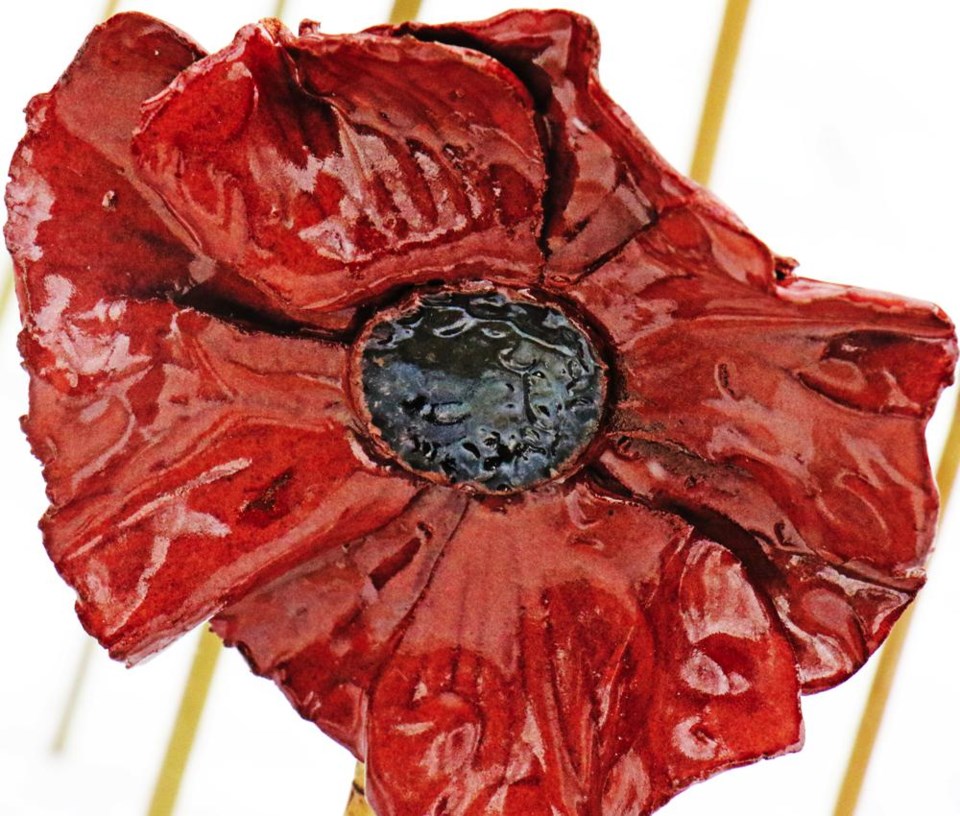YORKTON - 'Papaver Rhoeas' is the plant immortalized in John McCrae’s 'In Flanders Fields'.
This hearty annual is lovely to look at, with bright red petals streaked with black at their throats.
In Europe, this poppy, also called the corn poppy, is considered more of a weed than a thing of beauty because of its invasive growing habit, with seeds that can lie dormant until the right growing conditions come along, such as tilling or disturbing the soil.
Such were the conditions the spring of 1915 around Ypres; despite the horrific ravages of war on the landscape, the warm weather caused the poppy seeds lying in the battle-mangled soil to germinate. This was the sight that caught at the heart of Lieutenant-Colonel John McCrae, moving him and inspiring him to write his haunting poem.
And the poem inspired two women to do great things with their perception of the poppy as a symbol of remembrance.
One poppy story began in North America, with a lady named Moina Michael who worked at the YMCA Overseas War Secretaries office in New York. On November 9, 1918, Moina was at work thumbing through a magazine that had printed the poem “In Flanders Fields”. She was deeply moved by the words in the last verse about holding the torch, causing her to write her own poem “We Shall Keep The Faith” in reply, and she made a promise to herself that she would always wear a red poppy to keep the memory of the fallen soldiers alive. Moina must have liked flowers, because she always decorated the office with flowers at her own expense. On that particular day, her efforts were rewarded by several visiting soldiers who left a ten dollar donation in appreciation for the cheerful setting in the office. Moina used the money to buy 25 red silk poppies from a nearby department store; she wore one of the poppies and gave the rest to delegates attending a local conference, explaining the purpose of the poppies. And a tradition was born.
Meanwhile, the other poppy story was taking place with Anna Guerin, born in France, moved to Britain in 1911, then went to the United States at the beginning of WW1. Anna wanted to put her efforts into raising money for victims of war. She took on various projects with this goal in the United States, but she saw the poppy as the perfect symbol to make people aware of the suffering and sacrifice of war, so Anna made her way ‘across the pond’ to England and try to convince the British Legion of her idea. She believed in the idea so strongly that she said she would pay for a million poppies herself, and even went to France to be sure that the order was completed. The British Legion decided to make eight million more. How heartwarming to know that all those poppies sold out! Imagine her joy if Anna knew that the British Legion now distributes over 40 million poppies!
Two poppy stories, two determined women with a dream to create a lasting legacy of remembrance using the poppy, and awareness of the tragedies of war, not only for the fallen but for those left behind. The Legion site, legion.ca, tells us that the poppy should be worn on the left side, over the heart. The site says that “The act of Remembrance is one of the most important ways to honour and thank veterans for their sacrifices.” If someone in your family served, visit the Legion site to find out how their picture can be included in the virtual Wall of Honour and Remembrance.
Next spring, let’s plant poppies in our gardens, and remember. Visit the Yorkton hort site at www.yorktonhort.ca Thank you to our friends at YTW for their great work. Have a good week.






